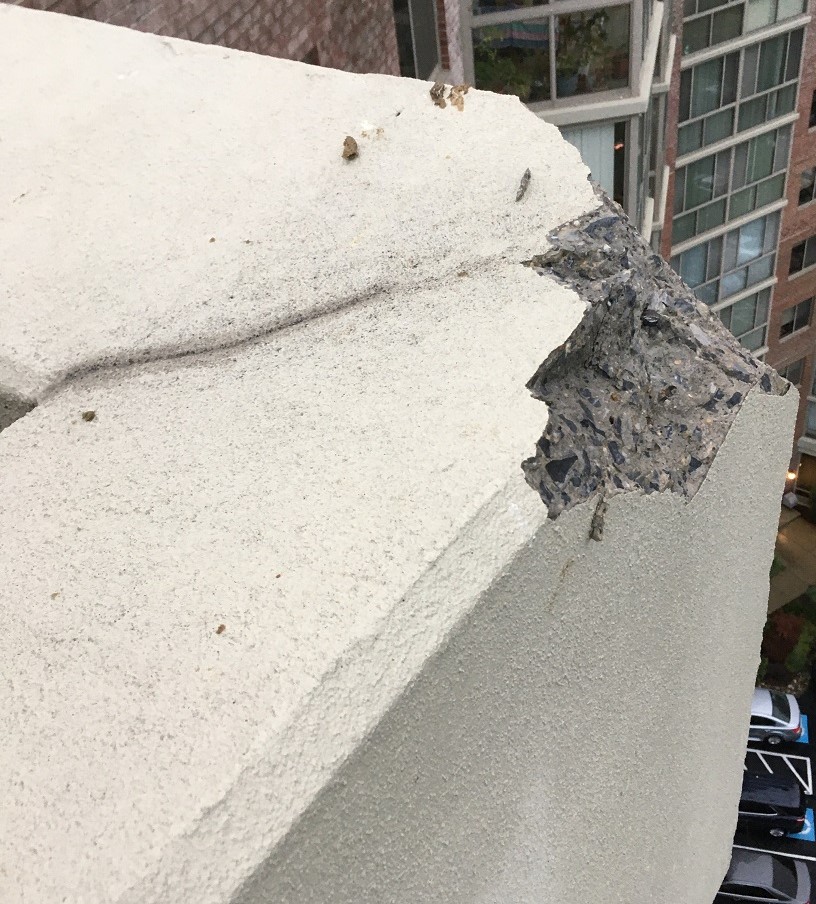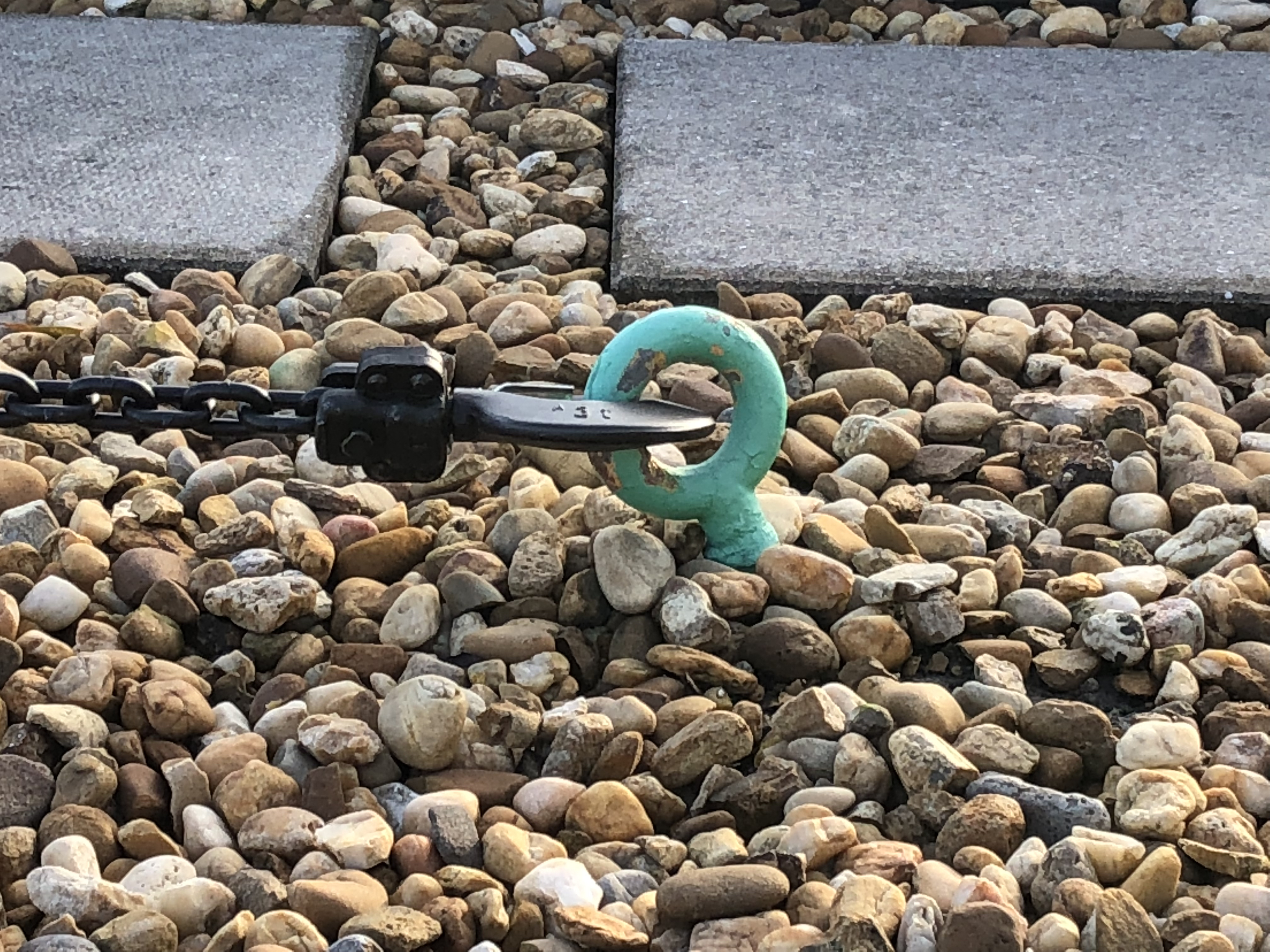Blog
View All Blog Postings
Why Use A Certified Welding Inspector?
 Having a Certified Welding Inspector (CWI) on your project will help increase the overall quality, consistency and repeatability of welds and welding processes. A CWI is trained and certified to perform inspection/observation in four major areas of welding: 1) Materials and Design, 2) Qualification of Welders and Welding Processes, 3) Fabrication, and 4) Inspection.
Having a Certified Welding Inspector (CWI) on your project will help increase the overall quality, consistency and repeatability of welds and welding processes. A CWI is trained and certified to perform inspection/observation in four major areas of welding: 1) Materials and Design, 2) Qualification of Welders and Welding Processes, 3) Fabrication, and 4) Inspection.
- Materials and design: The CWI will review design documents (i.e. drawings and specifications) to confirm that the designed welds and welding materials conform to applicable welding codes, such as American Welding Society.
- Qualification: The CWI will review Welding Procedure Specification(s), as well as all welder qualification records, to confirm that all welding personnel and processes to be used on the project are certified/qualified as required by applicable codes.
- Fabrication: Prior to the start of welding, the CWI will review the welding equipment and materials on site, as well as condition and surface preparation of base metals, to confirm compliance with the design documents and all applicable welding codes.
- Inspection: The CWI will visually (nondestructively) inspect welds during and after installation to confirm compliance with the design documents and all applicable welding codes. Where other nondestructive testing (NDT) is required, the CWI will observe the testing procedures and will review test results.
Please contact Savannah Penn, CWI at: spenn@etc-web.com
New Requirements For DC Buildings
Washington D.C. has established the 2021 Building Energy Performance Standards (BEPS) which became effective January 1, 2021 for existing and new buildings. The new standards set requirements for a building’s Energy Start score or equivalent Source Energy Use Intensity (Source EUI) based on the property type classification. These standards are part of a three-stage plan to meet the new energy performance standards in existing buildings and achieve energy and climate goals stated in the Sustainable DC plan, which aims to reduce the greenhouse gas emissions and energy consumption by 50% by Year 2032.
This first compliance period, which start this year and ends in 2026, affects private buildings with a footprint greater than 50,000 square ft and D.C.-owned buildings greater than 10,000 square ft. Phase Two, starting in 2027, will require building greater than 25,000 square feet to comply, and the final phase, starting in 2033, will include all building greater than 10,000 square feet. Buildings that do not meet the BPS will be placed into a compliance cycle and will have the end of the performance period to comply to the standards or be subject to fines.
A guide to the 2021 BEPS can be found at https://doee.dc.gov/publication/guide-2021-building-energy-performance-standards.
Should You Paint Exterior Brick? Probably Not.
 Stroll down any street in Baltimore or Washington, D.C. and you are bound to find numerous brick buildings sporting a fresh coat of paint. The trend of painting brick facades has become popular over the last several years and while painting brick can provide an updated appearance, it may not be the best idea.
Stroll down any street in Baltimore or Washington, D.C. and you are bound to find numerous brick buildings sporting a fresh coat of paint. The trend of painting brick facades has become popular over the last several years and while painting brick can provide an updated appearance, it may not be the best idea.
Brick masonry is naturally porous, meaning it contains small holes which allow liquid and air to pass through. Two common types of masonry wall assemblies we see locally are drainage wall systems and mass wall systems, both of which manage the water that inevitably enters through the porous masonry. Drainage walls contain an air cavity between the brick veneer and the back-up structure, allowing water to travel within this cavity and exit through flashings and weep holes. In comparison, mass walls contain multiple layers of brick masonry which rely on the wall thickness and bond between the bricks to resist water penetration into interior spaces. The majority of older and historic masonry buildings consist of a mass wall system.
Most paints readily available are not vapor permeable, more commonly known as breathable. Therefore, when paint is applied to bricks, they lose their porous nature which is critical for allowing evaporation in mass wall systems. The loss of porosity can cause any moisture that enters the wall system (through small cracks or other defects) or was present prior to paint application, to become trapped. This can cause bricks to deteriorate faster and can potentially trap moisture against interior framing elements, resulting in structural damage. Trapped moisture can also cause the paint to blister and flake, creating an unappealing appearance.
Additionally, masonry requires periodic maintenance. Painting brick can make it difficult to identify defects, such as cracked bricks and mortar, that should be repaired. Paint is also relatively permanent. Once brick is painted, removal can be very challenging and could result in significant damage to the brick walls.
However, there are options for updating the appearance of a brick façade, including brick stains and some breathable coatings. If you are interested in modifying the appearance of a brick structure and are looking for professional help, ETC can provide a solution.
How To Save On Energy Bills In Winter
If you cringe at the sight of your commercial space’s winter energy bills, it may be time to invest in energy-saving strategies. Once you understand why your bills are so high, you can approach solutions for decreasing your energy consumption. Several factors contribute to high energy usage in larger buildings, some specific to cold weather. Learn how you can save money on your energy bills in winter.
Factors That Influence Your Energy Bills
Electricity is a modern necessity, powering everything from lighting to temperature control to large appliances and equipment. Providing the energy required to power an entire building can be expensive. The good news is that you can take steps to lower your energy costs. Learn why your energy bill might be higher than it needs to be — and what steps to take to save on winter energy bills. Here are a few factors that influence energy efficiency.
Using Older Appliances or Equipment
Technology has improved over the years. Appliances, equipment, and tools have become more efficient, eating up less electricity to operate. If you’re using older devices or equipment, you may be sinking more funds than necessary into your energy bills. Upgrade your building’s equipment to lower your power consumption. It’s best to pay attention to Energy Star labels when available — Energy Star started rating products’ efficiency in 1992. If your appliances are older than that, it’s time to think about an upgrade.
Using Appliances or Equipment More Than Needed
It’s no surprise that using equipment and devices more than necessary raises energy consumption. Turn off lights, fans, and equipment when not in use. Install motion sensor lights in case someone forgets to flip the switch on their way out of the building.
Additionally, only use power tools and equipment at the lowest setting necessary. Using tools at the maximum power regardless of purpose will require more energy than needed. Make sure everyone is on the same page about using pneumatic tools or other equipment at the lowest necessary setting.
Lacking Heating, Ventilation, and Cooling (HVAC) Maintenance
Optimized HVAC efficiency is necessary for any commercial space. Accumulated dirt and debris affect efficiency by clogging filters and ducts. If you’ve neglected regular HVAC maintenance, this could contribute to higher energy bills. You can reduce your energy expenses by scheduling regular preventive maintenance. This setup will keep your system running as it should. It’ll also reduce the likelihood of major and expensive HVAC issues and extend the system’s life span.
Why Are Energy Bills for Commercial Spaces Higher in Winter?
Some energy efficiency factors are specific to winter. If your commercial space incurs high electric bills during the winter months, think about these contributing circumstances.
Buildings Are Occupied More Often
When outdoor temperatures turn frigid, people tend to occupy indoor spaces more than ever. The more time people spend inside your building, the more electricity they’re bound to use by turning on lights and operating equipment or electronic devices. Occupants expect spaces to be at a comfortable temperature, which means heating costs can accumulate.
Heat Leaks Through Cracks and Openings
Comfortable temperatures are necessary for both effective employees and satisfied patrons. As people occupy indoor spaces on a near-constant basis, they expect a sufficient level of warmth. Heating large buildings in the winter can cost a great deal of energy — if any of that heat is lost, your energy bill will represent wasted dollars. Heat escaping is one of the main culprits of high winter energy bills.
Top 5 Tips to Save Money on Winter Energy Bills for Commercial Spaces
You can take several steps to decrease your energy consumption and pay less this winter. If you’re wondering how to lower commercial energy bills during winter, follow these five simple tips:
1. Equip Your Building With Automatic Controls
Automatic controls ensure efficient energy use, leaving less room for human error. They may also provide you with helpful data regarding your energy usage. Equip your building with programmable thermostats and be mindful when adjusting the settings. Using this technology, you can conserve heat in your commercial space without lifting a finger. Set your thermostats to decrease the temperature when areas are not occupied. Be sure to keep the temperature high enough to avoid frozen pipes.
If you have a traditional thermostat, consider replacing it with a programmable one. If you’re paying to heat large spaces, this is a necessity for easy and convenient climate control. Doing so will help you gain more control of your building’s temperature and ensure employees and patrons are comfortable. It’s also a good idea to invest in automatic timers and movement sensors for your lights. That way, you’ll only pay to light up occupied spaces instead of constantly keeping the lights on throughout your facility.
2. Find and Address Leaks
As mentioned above, cracks and openings allow heat to go to waste. If your building has temperature leaks, your heating system will struggle to match the thermostat’s temperature and work much harder to heat spaces. To prevent this from happening, have a professional evaluate your building for any potential heat leaks. They’ll fill leaks with caulk or insulation, and they may also weatherstrip windows and doors to stop air infiltration.
Keeping the building’s heat sealed in will ensure a lower winter energy bill and give you peace of mind — you will no longer lose heat to the outdoors.
3. Insulate Water Heater and Pipes
Your building’s water heater and pipes can be sources of lost energy. If your water heater is warm to the touch, it might need better insulation. Contact a professional service to improve water heater insulation. You’ll need to do the same for your hot water pipes. Proper pipe insulation prevents heat loss as hot water travels from the water heater to a faucet, conserving energy. If not well-insulated, pipes may cause significant issues by freezing.
Frozen pipes can result in pressure buildups and bursts, causing flooding and subsequent damages. Such flooding can destroy equipment, furniture, or flooring and induce extensive repair costs. It can also present a safety hazard if it reaches electrical equipment or stands for any length of time, harboring bacteria or mold. Insulating your pipes will help you avoid pipe bursts and improve efficiency at the same time.
4. Use Efficient Lighting
If your building is fitted with traditional incandescent light bulbs, you’ll want to replace them with energy-efficient versions. Light-emitting diodes (LEDs), as well as halogen and fluorescent lights, use between 25% to 80% less energy than traditional incandescent bulbs and have a much longer life span. Energy-efficient bulbs also come in various colors and dimming capabilities, which can help them fit in with your business’s needs.
Once you’ve installed energy-efficient lighting, take advantage of automatic controls for further savings. Whenever possible, utilize natural light to save on energy costs. You might consider installing more windows if needed. Natural light has many health benefits, so your employees, patrons, or other occupants will be grateful.
5. Schedule an Energy Audit and a Utility Usage Assessment
You may not know where to start with decreasing your commercial space’s winter energy bills. Many factors and variables can affect the number on your bill — with an untrained eye, you might be unaware of your energy efficiency losses. In that case, it’s a good idea to schedule a building energy audit and utility usage assessment with a professional mechanical engineering firm.
Experts will help you determine where your energy costs lie and how to decrease them. A professional understanding of your energy expenses will help you invest in the right solutions, saving you money in the long run and giving you fitting answers for your energy usage issues.
Contact Engineering and Technical Consultants, Inc. to Get Started
If you’re ready to take proactive steps to decrease your energy bills this winter, start by bringing in the experts. With the help of Engineering and Technical Consultants, Inc. (ETC), you can invest in wise solutions to conserve energy. Request a building energy audit and utility usage assessment to learn about your energy consumption so you can make informed decisions. To decrease your winter energy bills, contact ETC today.
Understanding Your Building Components
 One of the most pressing questions when designing repairs for concrete slabs is whether or not the slab is post-tensioned, and if so, the locations of the stressed tendons. Accidentally cutting through a stressed tendon will decrease the slab’s load carry capacity, could possibly endanger the structural stability of the entire slab, and may result in injury to those in the building.
One of the most pressing questions when designing repairs for concrete slabs is whether or not the slab is post-tensioned, and if so, the locations of the stressed tendons. Accidentally cutting through a stressed tendon will decrease the slab’s load carry capacity, could possibly endanger the structural stability of the entire slab, and may result in injury to those in the building.
If present, the tendons and other imbedded items can usually be located through the use of ground penetrating radar equipment, but locating the tendons would be more accurate if the original building plans and shop drawings were available for review. It is imperative that property owners keep a copy of original building plans and documents and a comprehensive running log of all building studies, repairs, etc. in order to provide engineers and repair contractors with the most complete picture of their building’s history; these documents can be incredibly helpful when trying to understand your building and should be preserved. Providing ETC with as much information as possible will help us provide you with a comprehensive repair plan and avoid hidden headaches during construction.
Shortcoming of Corrugated Plastic Pipes
 Sometimes, differences in construction materials that might seem insignificant to the untrained eye can have long lasting implications and cause headaches down the road. ETC has seen this situation arise plenty of times when evaluating new below-grade drainage systems, specifically regarding the type of piping to be used: corrugated plastic pipes or rigid PVC pipes. Corrugated plastic pipes are thin walled pipes, typically .02” thick, with a series of grooves running parallel to each other along the length of the pipe, while rigid polyvinyl chloride (PVC) pipes are thicker, ranging from .1” to .5” depending on the diameter and schedule of the pipe, and have smooth inner and outer walls. Corrugated pipes are typically cheaper than PVC pipes and are easier to install and connect, making them a favorite of DIY-ers. However, in our experience, the increased flexibility and installation ease comes at a great sacrifice to the durability and effectiveness of the drainage system.
Sometimes, differences in construction materials that might seem insignificant to the untrained eye can have long lasting implications and cause headaches down the road. ETC has seen this situation arise plenty of times when evaluating new below-grade drainage systems, specifically regarding the type of piping to be used: corrugated plastic pipes or rigid PVC pipes. Corrugated plastic pipes are thin walled pipes, typically .02” thick, with a series of grooves running parallel to each other along the length of the pipe, while rigid polyvinyl chloride (PVC) pipes are thicker, ranging from .1” to .5” depending on the diameter and schedule of the pipe, and have smooth inner and outer walls. Corrugated pipes are typically cheaper than PVC pipes and are easier to install and connect, making them a favorite of DIY-ers. However, in our experience, the increased flexibility and installation ease comes at a great sacrifice to the durability and effectiveness of the drainage system.
Corrugated pipes tend to clog more frequently then solid-walled pipes due to their ribbed profile and
are more difficult to clean as well, as an auger or plumbing snake could easily tear through the pipe’s
thin plastic walls. The thin plastic pipe walls are easily crushed as well, especially when backfilling with
compacted soils or stone. We have observed drainage systems where newly installed corrugated pipes
were crushed during construction, rendering a sizable portion of the drainage system useless from the
start. ETC always recommends rigid PVC pipes over corrugated pipes for below-grade drainage
applications in order to provide clients with an effective and durable drainage system. If you’re having
drainage issues and looking for professional help, ETC can provide a long-last solution to address your
needs. Contact us for a free proposal:
Welcoming Rob Broczkowski To Our Team
 We are pleased to introduce our new Mechanical Engineer, Mr. Robert Broczkowski, PE. Rob is a graduate of University of Maryland and has over 10 years experience in the mechanical engineering field. His background includes building energy and cost analysis, HVAC design, and construction administration. Rob has worked on many projects in the Mid-Atlantic region, applying key skills in system evaluation and design, equipment selection, and other critical HVAC principles. He is also an active member in the engineering community holding a chapter position in his local professional society for over 5 years. Rob looks forward to working with you on upcoming mechanical projects. Please feel free to contact him for a free proposal.
We are pleased to introduce our new Mechanical Engineer, Mr. Robert Broczkowski, PE. Rob is a graduate of University of Maryland and has over 10 years experience in the mechanical engineering field. His background includes building energy and cost analysis, HVAC design, and construction administration. Rob has worked on many projects in the Mid-Atlantic region, applying key skills in system evaluation and design, equipment selection, and other critical HVAC principles. He is also an active member in the engineering community holding a chapter position in his local professional society for over 5 years. Rob looks forward to working with you on upcoming mechanical projects. Please feel free to contact him for a free proposal.
Crawlspace Ventilation
 When most property owners think about ventilation upgrades, they often consider installing new windows and doors or replacing the existing HVAC equipment. However, they often forget to consider one of the most important locations within their building: the crawlspace. Improper ventilation can allow for humid air to become stagnant within the crawlspace, spurring microbial growth and accelerating the deterioration of both wood and concrete structural elements. Given the difficulty accessing the crawlspace, as well as the typical space restrictions, crawlspace structural repairs can be quite costly and lengthy, but proper ventilation upgrades can help curtail these repairs.
When most property owners think about ventilation upgrades, they often consider installing new windows and doors or replacing the existing HVAC equipment. However, they often forget to consider one of the most important locations within their building: the crawlspace. Improper ventilation can allow for humid air to become stagnant within the crawlspace, spurring microbial growth and accelerating the deterioration of both wood and concrete structural elements. Given the difficulty accessing the crawlspace, as well as the typical space restrictions, crawlspace structural repairs can be quite costly and lengthy, but proper ventilation upgrades can help curtail these repairs.
Allowing for adequate airflow is crucial for ensuring the longevity of the crawlspace structural elements. The International Building Code (IBC) imposes certain ventilation requirements given the size of the crawlspace area and other circumstances, such as climate conditions and crawlspace construction. In our experience, it’s not uncommon to find crawlspaces with either undersized vent openings or simply too few openings at all. Additionally, we typically find vents that have been covered with mulch or other landscaping, rendering the vent useless. The number of required vents can be reduced through the installation of fans within the foundation walls or the installation of a vapor barrier over the exposed crawlspace soils, given that the vapor barrier made of qualifying materials, properly installed, and in good condition. If you’re overdue for a crawlspace inspection, reach out to ETC to help evaluate your crawlspace today.
How Your HVAC System Can Stop the Spread of Germs
A heating, ventilation, and air conditioning (HVAC) system is a major contributor to the indoor air quality of any building. If your HVAC system is appropriately designed and maintained, it can help improve the quality of the air. But a poorly designed or maintained HVAC system can make the air quality worse, which can lead to health problems among building occupants.
At ETC, we provide expert HVAC and mechanical engineering services to improve your HVAC system and help to prevent the spread of germs throughout your building.
How Indoor Air Quality Affects Your Health
According to the EPA, the concentration of certain indoor air pollutants is two to five times greater than the average concentrations found in outdoor air. People exposed to poor indoor air quality may experience health issues such as headaches, fatigue, sneezing, coughing, nausea, and other symptoms.
Your HVAC system has a significant impact on indoor air quality. Issues like excessive humidity, extreme temperature variations, and unpleasant odors coming from the air ducts all indicate that your HVAC system could be harming the air quality. If these HVAC issues are left untreated, they can eventually cause short-term and long-term health complications.
During cold and flu season, viruses spread quickly if the air in your building is stagnant and unpurified. An HVAC system is responsible for air movement within your building, which means it can prevent the spread of germs if there is proper circulation. If not, the system may contribute to disbursing the contaminants that result in illness.
Recently, the relationship between the coronavirus and HVAC systems has become a major concern. While there is currently no documented evidence that the coronavirus can be spread through HVAC systems, building owners can minimize the risk by maintaining a clean and updated HVAC system that promotes healthy indoor air quality.
How ETC Can Improve Your HVAC Systems
With the right features and maintenance regimen, your HVAC system can help keep everyone in your building safe and healthy. At ETC, we know precisely how to optimize your HVAC system for better air quality. We may suggest solutions like installing UV lights and media air filters, which neutralize or trap contaminants so they will not be recirculated into your building. Our recommendations are based on a thorough assessment of your current system and our expert knowledge of HVAC systems.
We use all the latest computer modeling software to plan your system upgrade, and we consult on everything from design to construction. We pride ourselves on being the best, so you can trust that when you work with us, you will receive the attentive and high-quality service your project deserves.
Contact ETC for HVAC and Mechanical Engineering Services
We work with clients across different building segments, including commercial, retail, recreational, residential, governmental, institutional, and historical, and we tackle even the most challenging projects with precision. Contact us today to learn more about our services.
The Importance of Flashing Your Wood Balcony
 Wood-framed balconies can look sharp on a building, not to mention the comfortable outdoor spaces they can provide. One of the most important ways to protect your wood balconies and decks is to prevent water from deteriorating the framing. Deterioration typically occurs when water cannot properly drain and becomes trapped against wood surfaces. Consequently, this type of deterioration oftentimes occurs where we cannot see it!
Wood-framed balconies can look sharp on a building, not to mention the comfortable outdoor spaces they can provide. One of the most important ways to protect your wood balconies and decks is to prevent water from deteriorating the framing. Deterioration typically occurs when water cannot properly drain and becomes trapped against wood surfaces. Consequently, this type of deterioration oftentimes occurs where we cannot see it!
A common location for deterioration on wood balconies is along framing members that connect to the
building (i.e. ledger boards, joists, etc.). Water often migrates behind these framing members and does
not have a way out. Additionally, frequent moisture in this location can deteriorate interior building
framing elements, such as wall studs or floor joists. This photo shows a building exterior following
demolition of wood-framed balconies. The deteriorated exposed framing on the left-hand side shows
why it is so important to protect wood framing from trapped water. What is the important difference
between the left and right sides?
A metal flashing was installed along the original balcony framing on the righthand side, but not the left. Flashing is an impervious material, such as metal or plastic, that prevents water from intruding to an interior space by providing an alternate drainage path (see the sketch below from FEMA Home Builder’s Guide to Coastal Construction Technical Fact Sheet No. 24 for a typical ledger flashing detail). After more than 30 years of exposure to the elements, we can see how flashing played an important role in protecting the wood framing of the building shown.
Lightning Protection Systems for Buildings
 Does your building have lightning rods? The summer of 2020 brought with it some incredible lightning storms. Without a lightning protection system, buildings may be at risk of lightning-related damage, including electrical fires and physical damage to the structure. For example, take a look at the lightning damage to these rooftop parapet walls on a local high-rise building. Bits of concrete tumbled down to ground level, and the embedded steel even featured black char marks. Fortunately, the damage was minimal, quickly repaired, and nobody was hurt during the storm!
Does your building have lightning rods? The summer of 2020 brought with it some incredible lightning storms. Without a lightning protection system, buildings may be at risk of lightning-related damage, including electrical fires and physical damage to the structure. For example, take a look at the lightning damage to these rooftop parapet walls on a local high-rise building. Bits of concrete tumbled down to ground level, and the embedded steel even featured black char marks. Fortunately, the damage was minimal, quickly repaired, and nobody was hurt during the storm!
 Although the cost for installing lightning rods is known to be high, protection against lightning-related damage can save buildings and save lives. Check out this Lightning Protection Institute website for an overview of lightning protection standards, technology, and design: https://lightning.org/lightning-protection-overview/
Although the cost for installing lightning rods is known to be high, protection against lightning-related damage can save buildings and save lives. Check out this Lightning Protection Institute website for an overview of lightning protection standards, technology, and design: https://lightning.org/lightning-protection-overview/
Architectural Design in a Post-COVID World
When a pandemic hits, it’s no surprise that people’s way of life changes with it. You try to say farther away from other people, wear your mask out in public, and scrub your hands with hand sanitizer much more often. What might surprise many, however, is that a pandemic can impact the way buildings are designed. In the early 20th century, for example, tuberculosis inspired architects to design buildings with elements that could help people recover from it.
The new designs they incorporated, such as light-colored rooms and expansive windows across long walls, ended up becoming mainstays in architectural design as a whole, making up much of what we now recognize as modernist architecture. In the same way that tuberculosis inspired new architectural styles, COVID-19 will likely lead architects to develop new designs that could lead to major changes in the field.


















